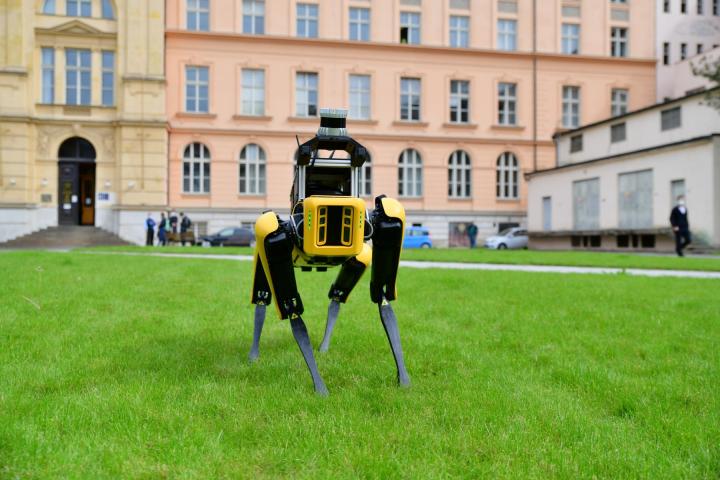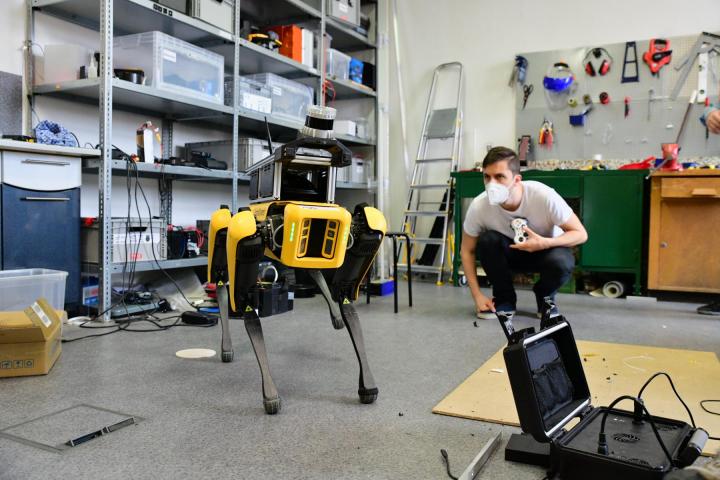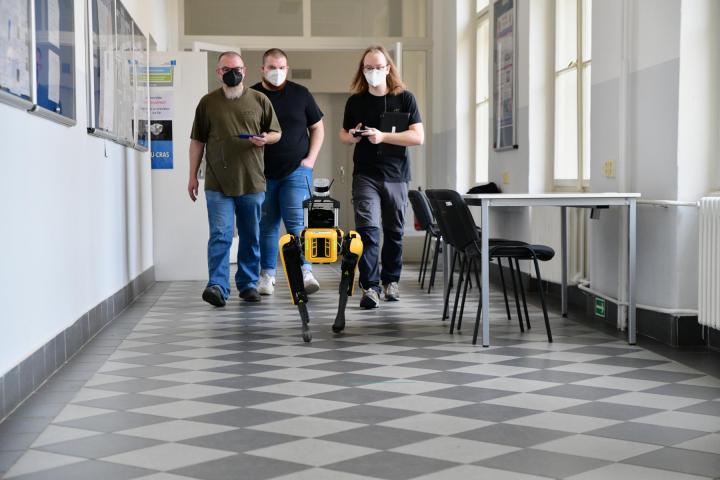
A team of about 20 robots performing under the banner CTU-CRAS-NORLAB (Czech Technical University - Center for Robotics and Autonomous Systems - Northern Robotics Laboratory) will set out for the underground complex MegaCavern in Kentucky to defend the third place from the previous two rounds. In them, it managed to establish in the competition of world teams from prestigious research institutions (including NASA, MIT, CMU, OSU, CalTech, Oxford and ETH Zurich) as the best unsponsored team. In December 2020, a grant of $ 1.5 million (32.6 million crowns) from the United States Department of Defense Advanced Research Projects Agency (DARPA) placed CTU-CRAS-NORLAB in the category of sponsored teams.
"The subsidy allowed us to invest in the purchase of state-of-the-art robotic hardware, so in the end we will be fully comparable with the best in terms of technological equipment," says prof. Tomáš Svoboda, head of the Department of Cybernetics, Faculty of Electrical Engineering, Czech Technical University and head of the CTU-CRAS-NORLAB team. The SPOT robot with serial number 1 arrived at Charles Square on 3 May, and another robot is to join it during the summer.
According to prof. Svoboda´s biggest challenge will be their rapid integration with existing robots so that they can effectively exchange information in an environment where there is no GPS signal. "The conditions of the cave do not allow the robots to be controlled manually by the operator and will therefore be dependent exclusively on their autonomous movement, decision-making and mutual coordination during the competition. It is these autonomous skills of planning and cooperation of robots in the performance of research and search tasks that will decide which of the eight finalists in the final in MegaCavern will succeed, "explains prof. Tomáš Svoboda.
he DARPA Subterranean (SubT) Challenge simulates a real-life rescue situation after a landslide or disaster. The teams of robots have the task of identifying as many objects as possible, such as people, telephones or backpacks, or detecting escaping gas in an unknown environment in one hour. In the final round, it's not only about the $ 3.5 million reward for the first three teams, but also prestige. The findings of scientists will find application in time-critical defense or civilian operations such as "search and rescue".
How to transform SPOT into a member of the rescue team in four months
The heterogeneity of the hardware equipment of the team from the Prague Faculty of Electrical Engineering of the Czech Technical University places demands especially on the integration of their software. “Each of our wheeled, crawler, flying and six-legged rescue robots, with which we completed the previous rounds of the DARPA Subterranean Challenge, is in some ways different, has a specific way of moving and consists of dozens of subsystems. In addition, a four-legged SPOT has now been added, which, according to current knowledge, is perfectly available for autonomous movement in difficult terrain, mainly thanks to the unique walking algorithms developed by Boston Dynamics, "says prof. Jan Faigl, Head of the Computer Robotics Laboratory of the Center for Artificial Intelligence, Faculty of Electrical Engineering, Czech Technical University.
"Our immediate task will be to create another layer over the native SPOT software, which will correspond to the conditions of the competition and ensure that our SPOTs can orient themselves in an unfamiliar environment. The goal is for our team of robots to be able to communicate with each other in the underground complex as well as possible and to perform the tasks of rescuers in a coordinated manner, "adds prof. Jan Faigl.
In order for SPOT to become a full member of the DARPA Subterranean (SubT) Challenge final set, its four built-in ambient cameras will need to be complemented with a LIDAR terrain mapping sensor, better optical cameras and other computing devices running neural networks capable of identifying objects and locate the robot in a dynamically generated 3D environment map. Computers will plan and evaluate the robot's trajectory to avoid obstacles. With regard to its load and consumption, it will be necessary to expand the battery to keep it in operation during the sixty-minute competition round.
An integral part of such a complex project is testing. The classic way of testing each individual part using a simulator is not suitable, because the simulator is not able to simulate extreme environments where fog, mud, dust, absence of GPS signal may occur, so it is tested in real life, first in the workshop at the faculty, then in suitable terrain. "Part of the original scenario was the third round in the United States, organized by DARPA, but due to the pandemic it took place only virtually, so this year we want to return to Býčí skála in the Moravian Karst, which should best meet the conditions of the final round," says the plan for the coming weeks. prof. Tomáš Svoboda.
The project does not end with the final round in Kentucky as other research possibilities open up
The work of the team of robots from the Faculty of Electrical Engineering is far from over with the final round. The most valuable part of the competition is the experience gained from a demanding environment where robots have the task of replacing humans. "We are already looking for directions for subsequent research. One of the topics is related to building a relatively cheap communication infrastructure that will help in rescue operations and solve challenges in environments such as caves or underground, where it is difficult to spread the signal, "says prof. Jan Faigl.
Another big topic is the localization of autonomously controlled robots. In the case of autonomous robot movement, for example in Prague, much more accurate localization will be needed than current technologies are able to offer. Research in this area is underway and SPOT, as the best current platform for movement in an environment that is intended for humans, gives scientists from FEE CTU the opportunity to get involved.
"In an environment with people, such as offices, production facilities or streets, it is important that the robot can move in it and that it is empathetic to people. So far, the robot attracts the attention of people and they avoid it, but if, for example, SPOT is in everyday use, it is expected that it will not interfere and will be able to coexist with humans, "explains the application scenario of further research prof. Jan Faigl. The last direction of research on walking robots are walking methods, which are a great challenge for academics in terms of movement stability in a demanding environment and its effectiveness.
Students have been an integral part of the team since the beginning of the project
All these areas of academic research provide a great opportunity for student involvement. Postgraduate students - the doctoral students - form the research core of the team. Important members are also students of master's programs at the Faculty of Electrical Engineering CTU Cybernetics and Robotics and Open Informatics. Part of the DARPA grant will be invested in their journey to the finals in Kentucky, where they will form an integral part of the team.
The project offers many opportunities for student involvement. It is a combination of hardware and software tasks, so students typically start by implementing selected components under the supervision of more experienced colleagues and gradually work on them. Success is conditioned by the teamwork of robots, but especially by the people who create the system. Students naturally learn to work in a team. It also works great to know that students are learning something that has an immediate impact on the functioning of the system.
A video on how SPOT gets along with the academic environment on Charles Square can be found here.
Photo, courtesy of: Petr Neugebauer, Faculty of Electrical Engineering, CTU

